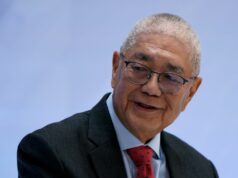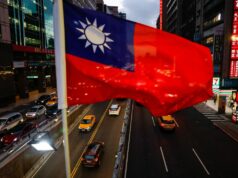THE PESO weakened on Tuesday as protests in Hong Kong dented sentiment, causing markets to flock to safe havens.
The local currency lost 58 centavos to close at P52.46 against the greenback from its P51.88-per-dollar finish last Friday.
Local financial markets were closed on Monday in observance of Eid al-Adha.
The peso opened weaker at P52.10 a dollar. It dropped to as low as P52.47 versus the greenback, while its intraday high stood at P52.07 per dollar.
Dollars traded on Tuesday totalled $1.21 billion, higher than the $914.71 million seen on Friday.
“The peso depreciated significantly due to strong safe-haven dollar demand from heightening geopolitical uncertainties abroad and diminishing optimism on global trade developments,” a trader said in an email on Tuesday.
Ruben Carlo O. Asuncion, chief economist at UnionBank of the Philippines, Inc., said the main drivers of the peso’s movement yesterday were mainly external in the absence of local leads.
“Global trade tensions, coupled with concerns surrounding protests in Hong Kong prompted players to move toward safer assets,” another trader said.
Hong Kong’s airport, the world’s busiest cargo airport, reopened on Tuesday after protesters managed to close it down the previous day. The mood remained cautious as the increasingly violent demonstrations have plunged the Chinese-ruled territory into its most serious crisis in decades.
The weeks-long protests began in opposition to a bill allowing extraditions to mainland China but have quickly morphed into the biggest challenge to China’s authority over the city since it took Hong Kong back from Britain in 1997.
For today, the peso is expected to weaken further on likely strong US data.
“The local currency is expected to weaken further amid likely firm US consumer inflation reports overnight,” Mr. Asuncion said.
The first trader gave a forecast range of P52.30 to P52.60 versus the dollar, while Mr. Asuncion sees the peso moving within the P52.30-P52.60 band.
Most other Asian currencies also weakened on Tuesday, as the prolonged Sino-US trade dispute and a free fall of the Argentine peso weighed on investors’ risk appetite, while Singapore cutting its full-year growth forecast added more pressure in the region.
Signals of a drawn out tussle between the US and China have kept global markets on edge and the lack of any progress in resolving their differences is a major worry for many Asian economies, which count Beijing as a top trade partner.
In Argentina, the local peso weakened more than 15% against the dollar after President Mauricio Macri got thumped in Sunday’s primary vote, a stark early warning for the incumbent ahead of the general election in October.
Meanwhile, the Singapore government cut its full-year forecast range for gross domestic product (GDP) as global conditions were seen worsening and data confirmed the slowest growth rate in a decade amid mounting fears of recession in the city-state.
The Indian rupee led losses on the day, weakening as much as 0.6% to 71.190 against the dollar, its lowest level since Feb. 28.
The Indonesian rupiah, the South Korean won and the Thai baht depreciated up to 0.3% each.
The Malaysian ringgit fell as much as 0.2%, while the Chinese yuan, the Singapore dollar and the Taiwan dollar depreciated slightly. — BML with Reuters



